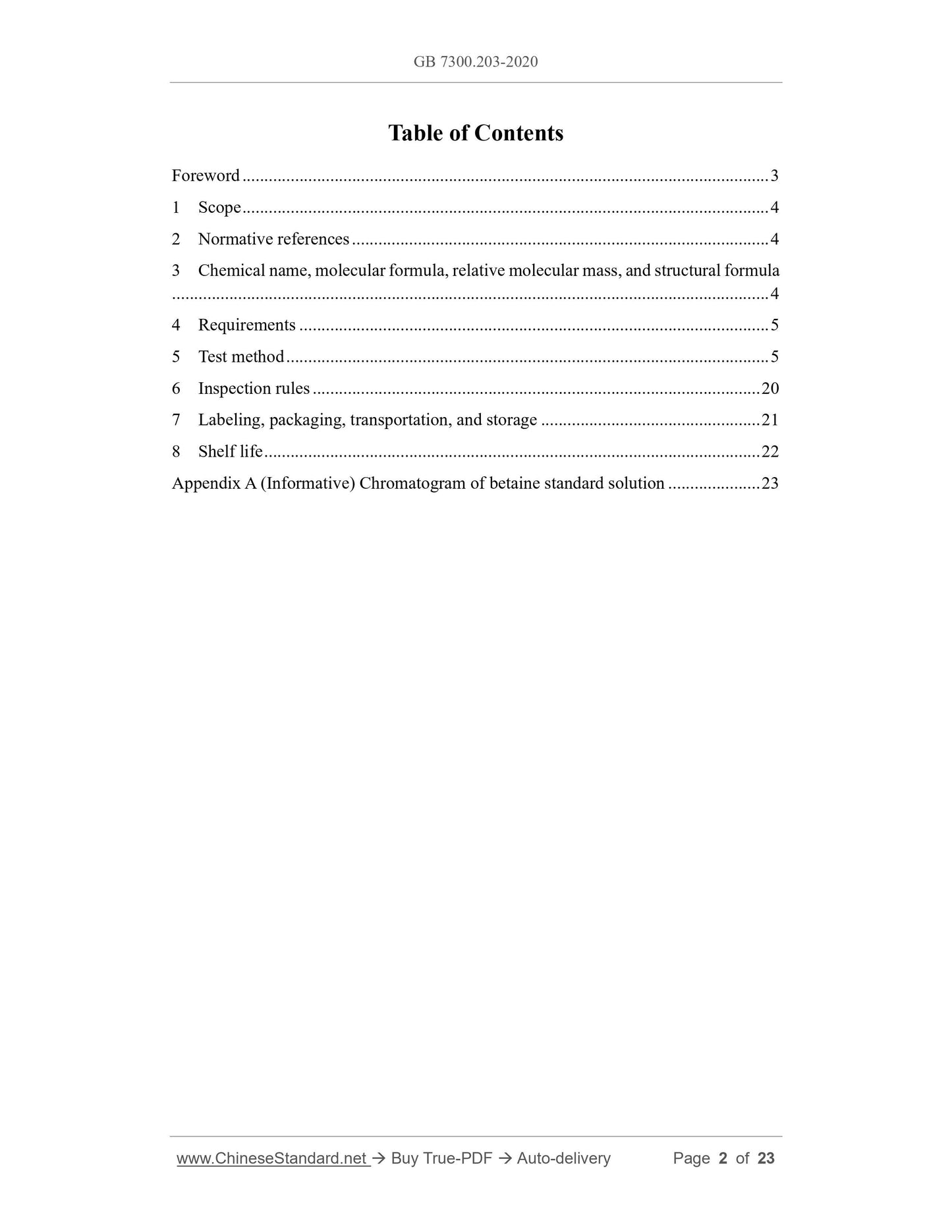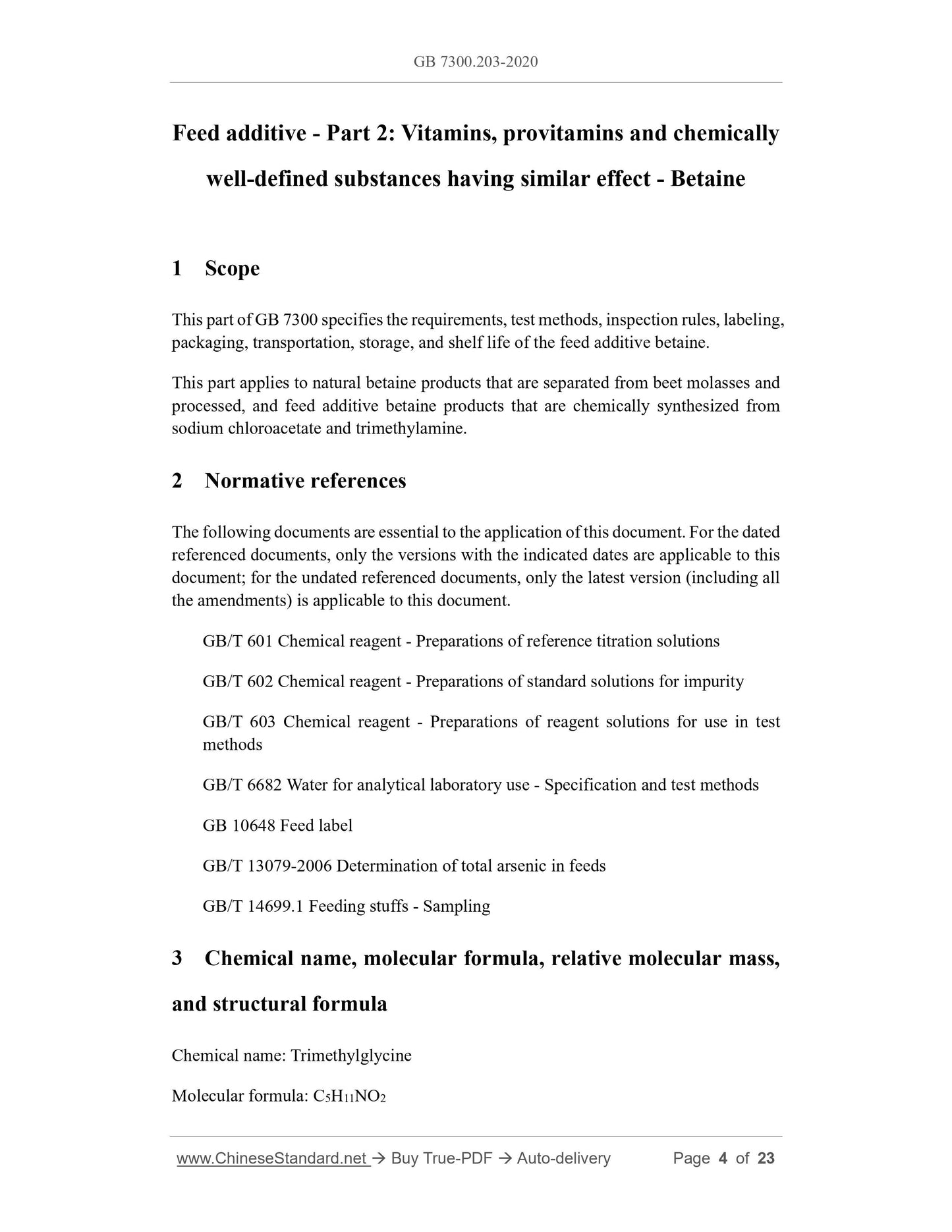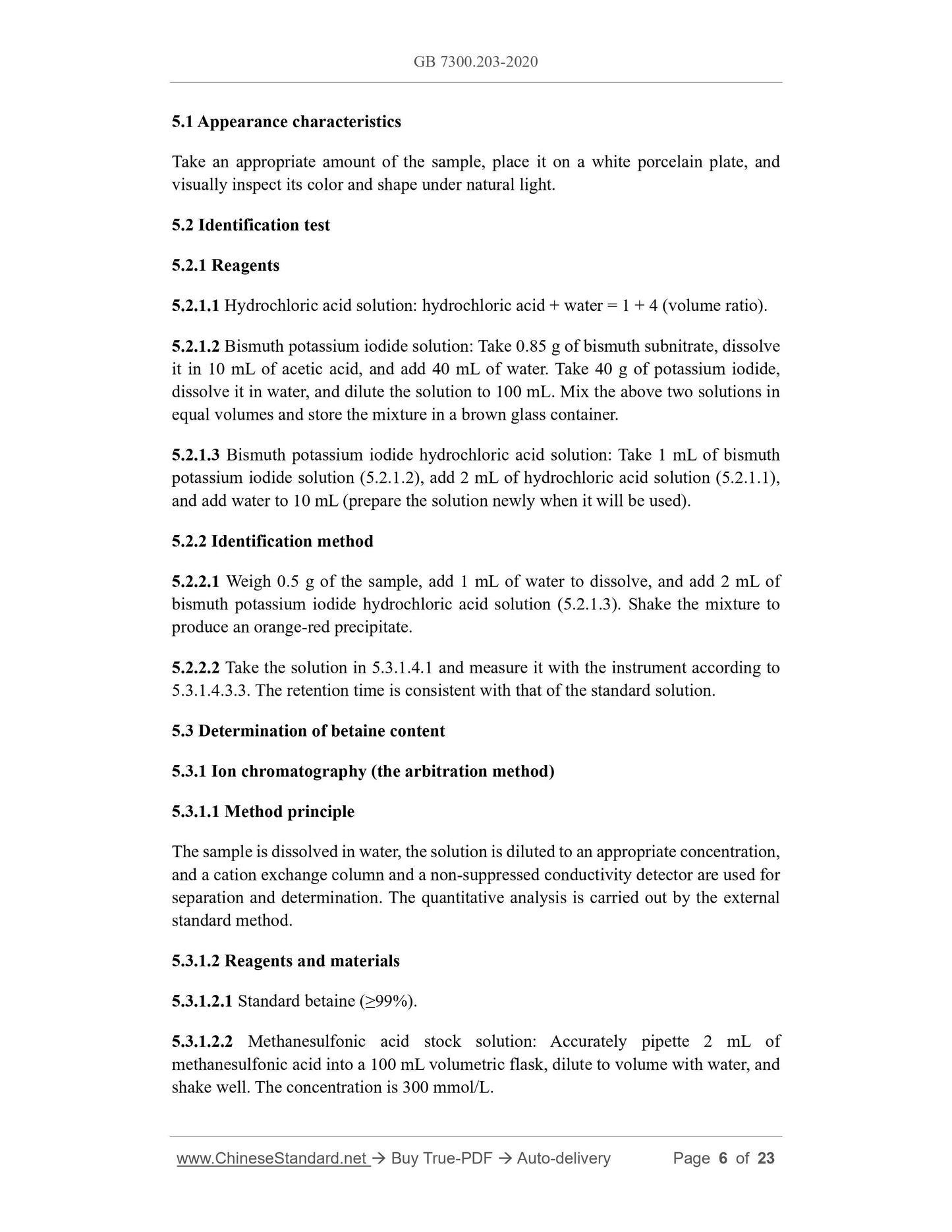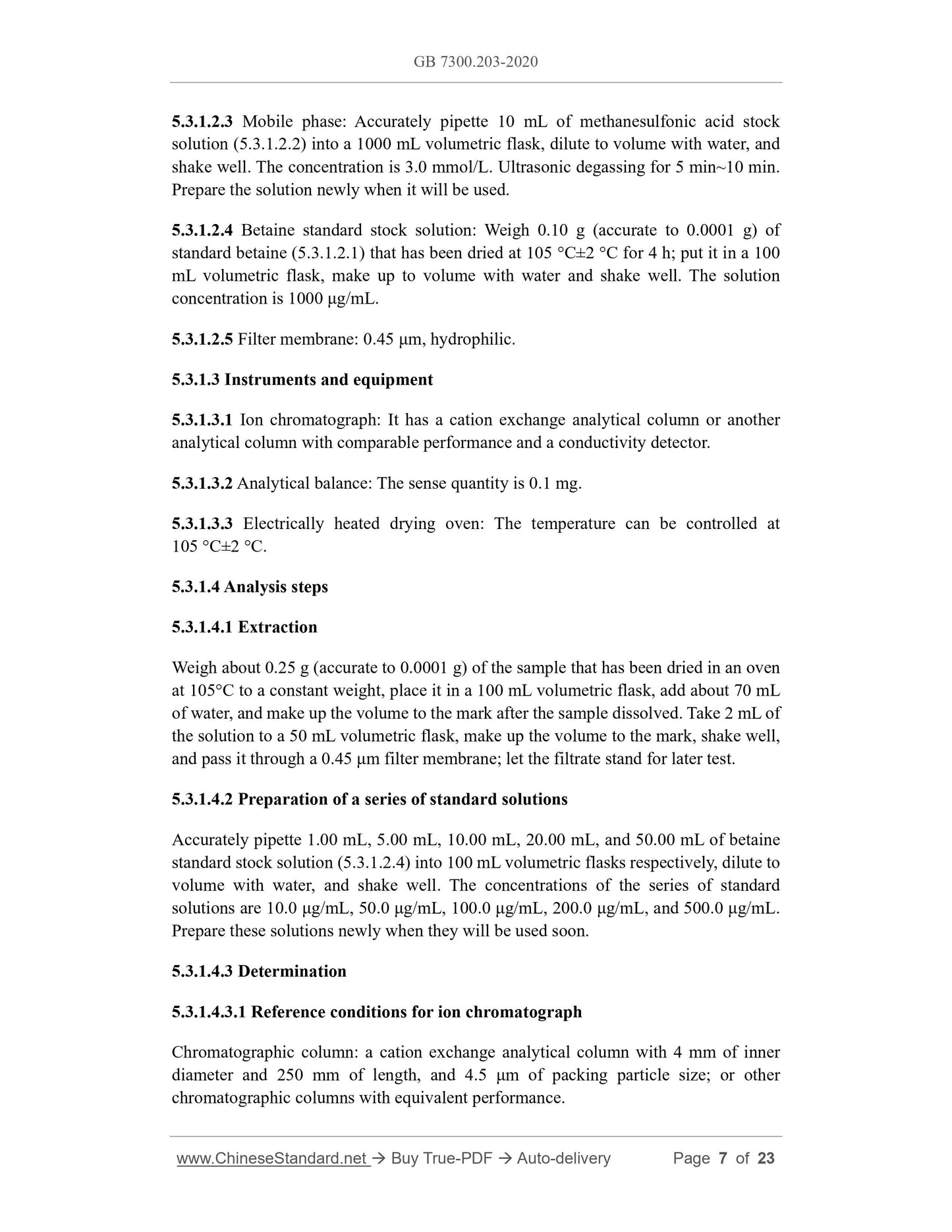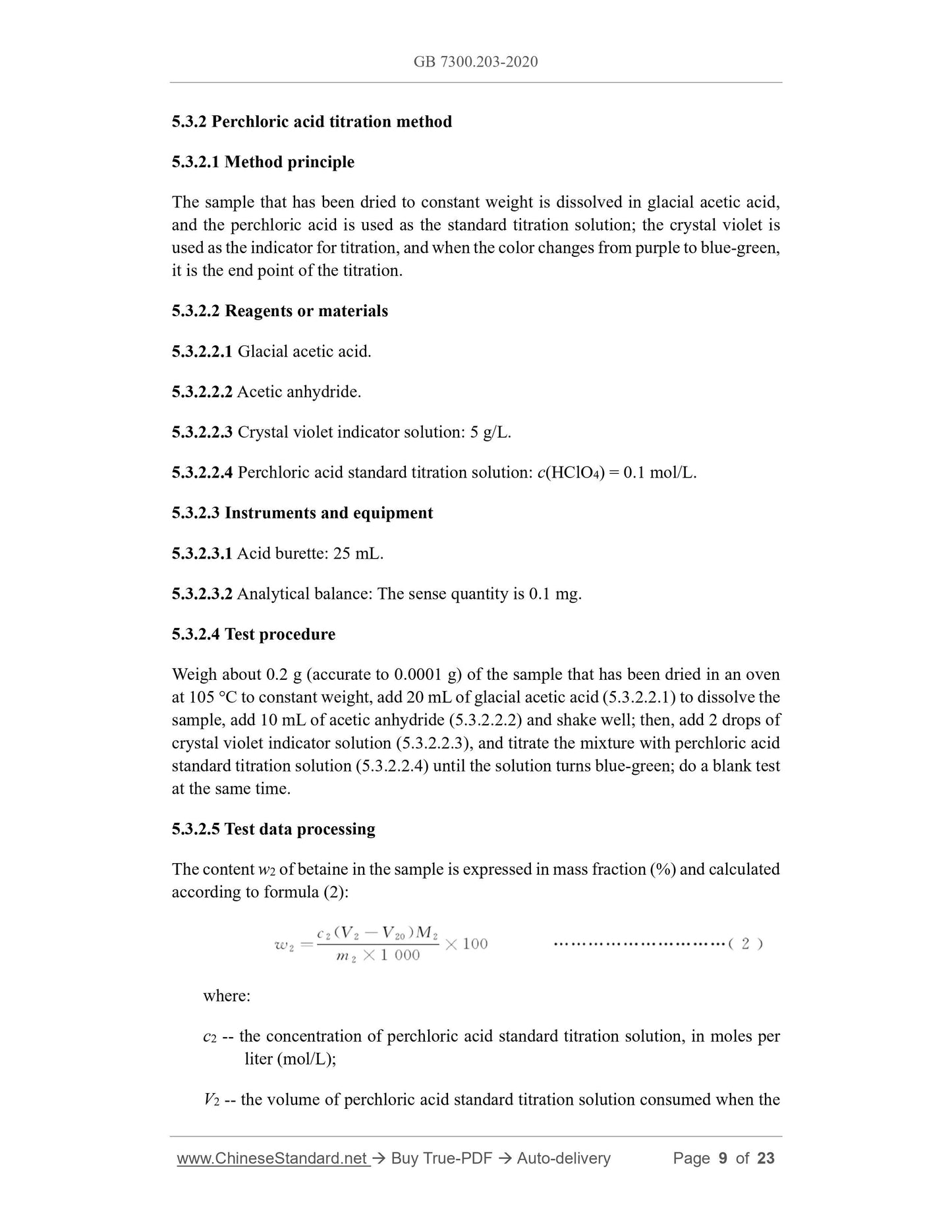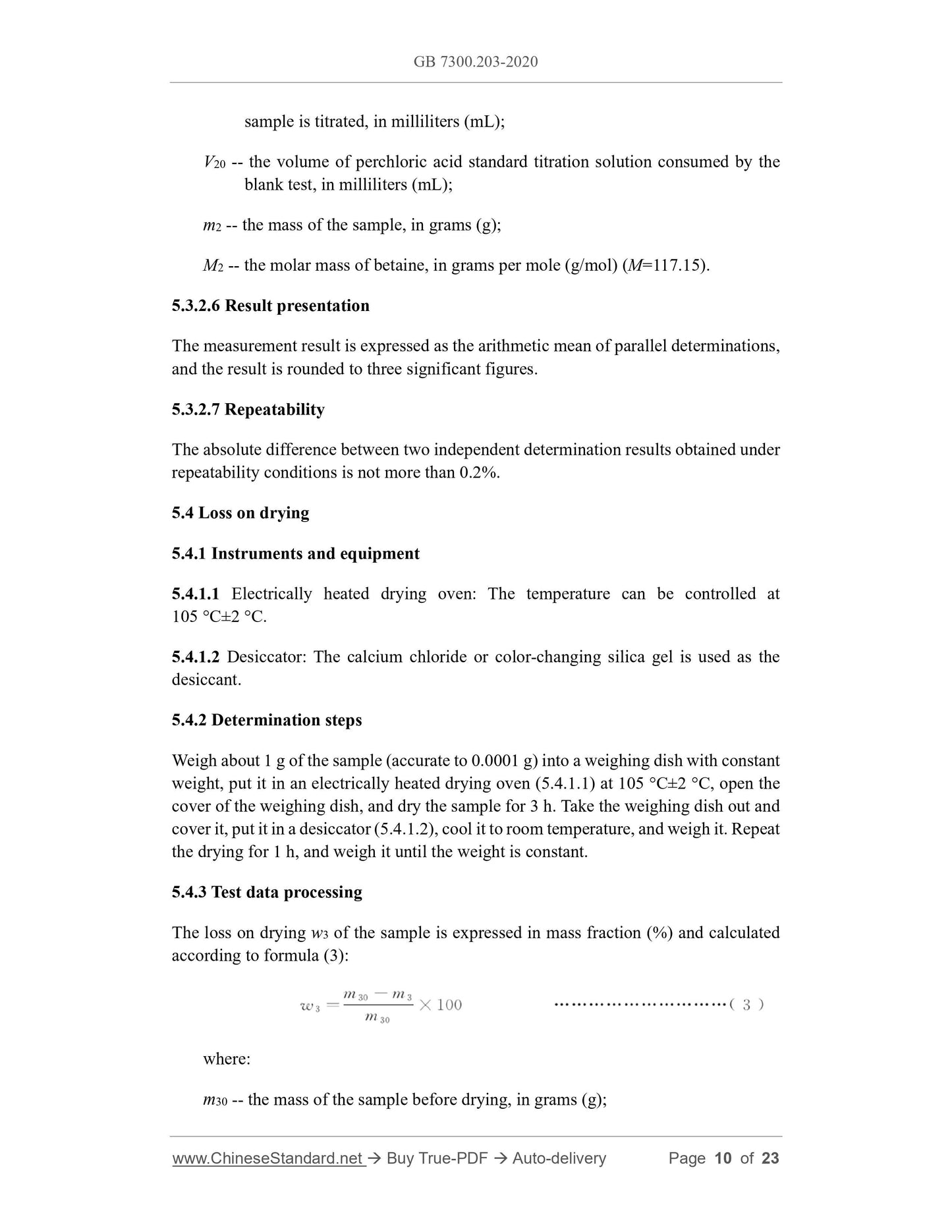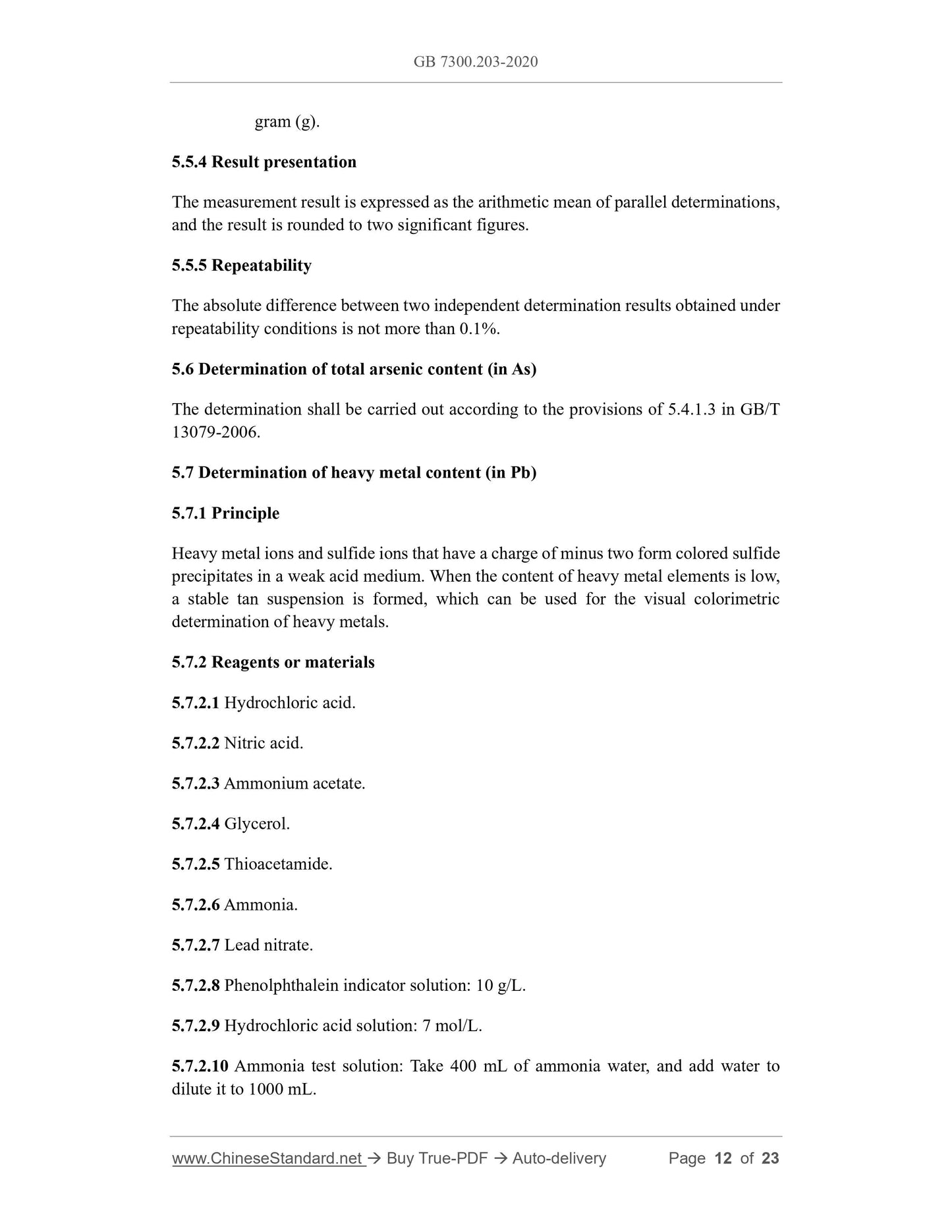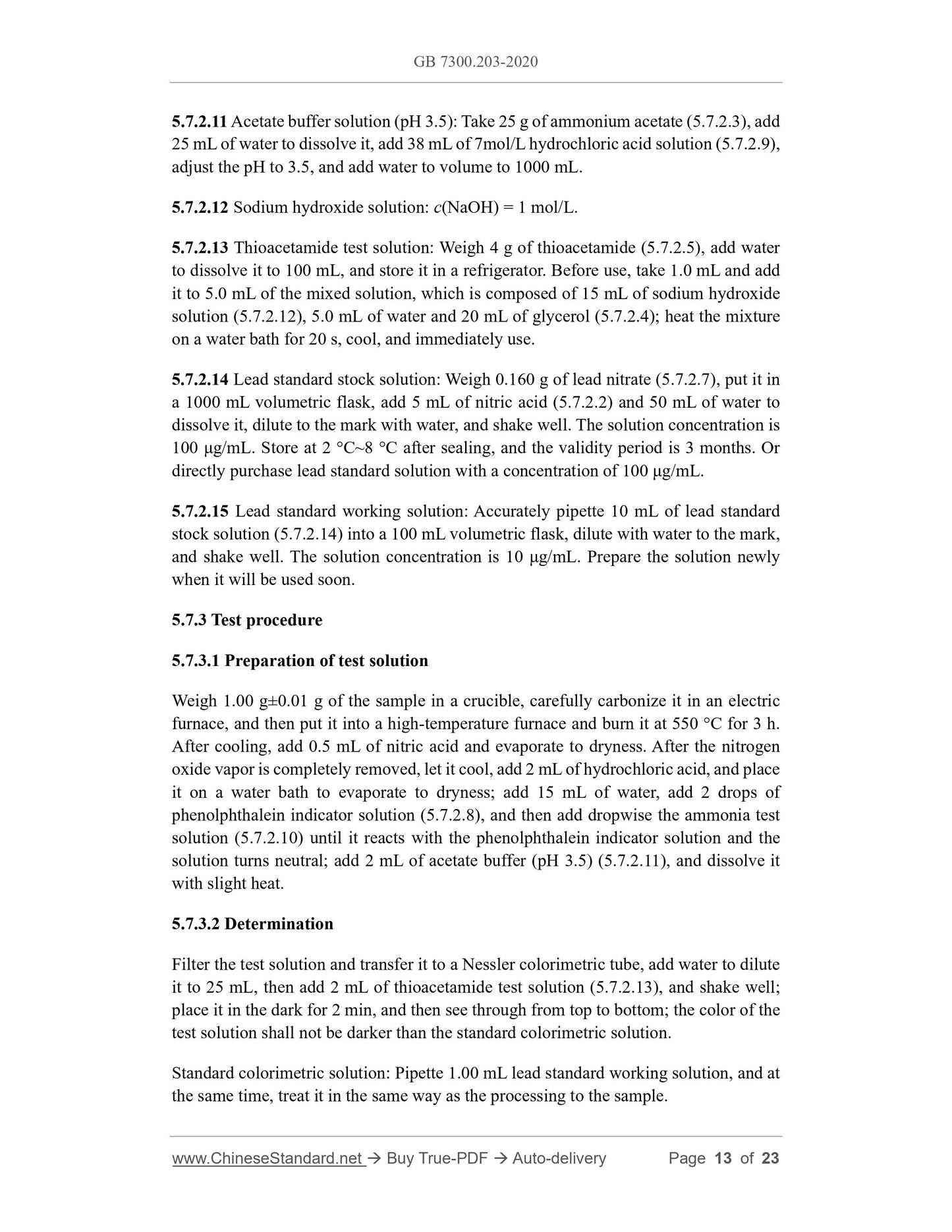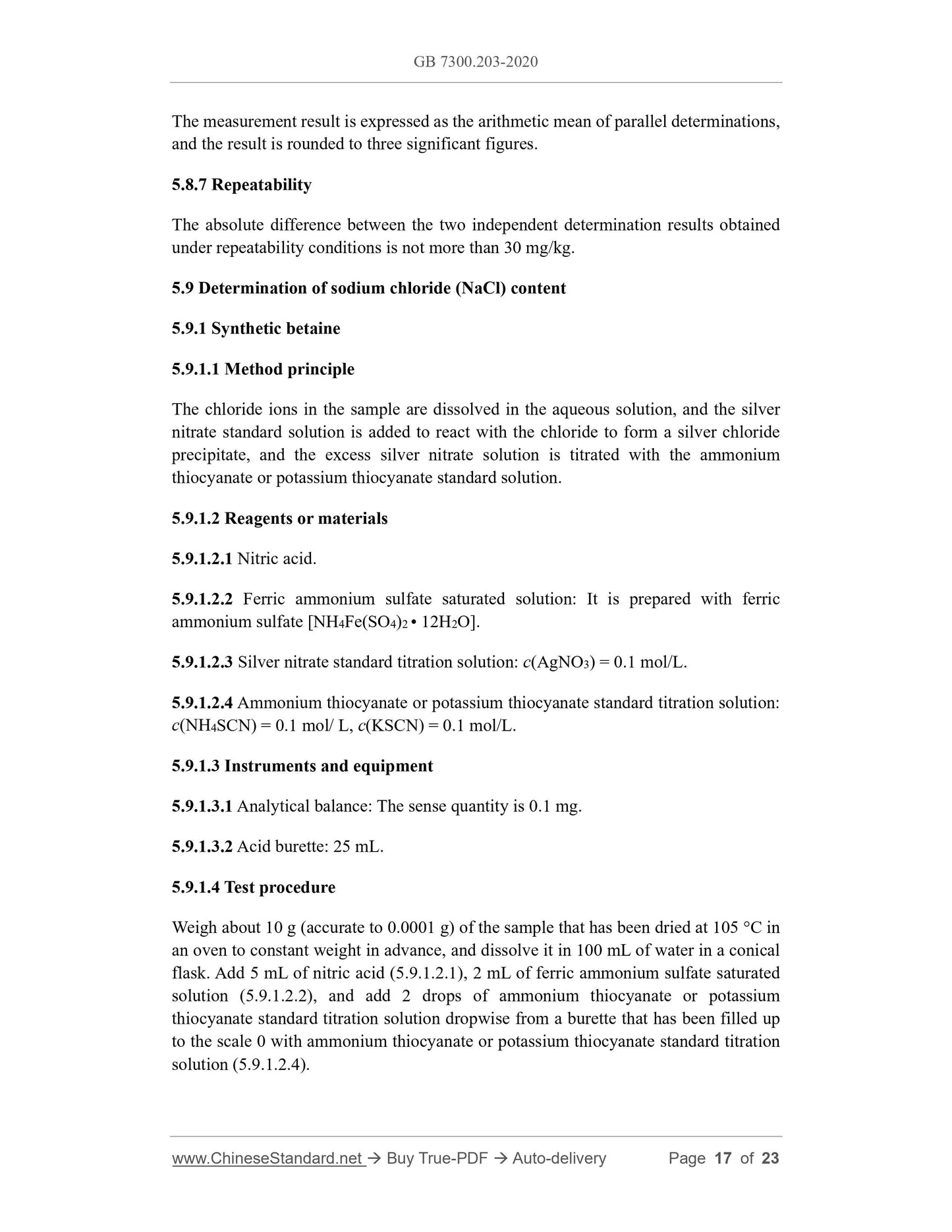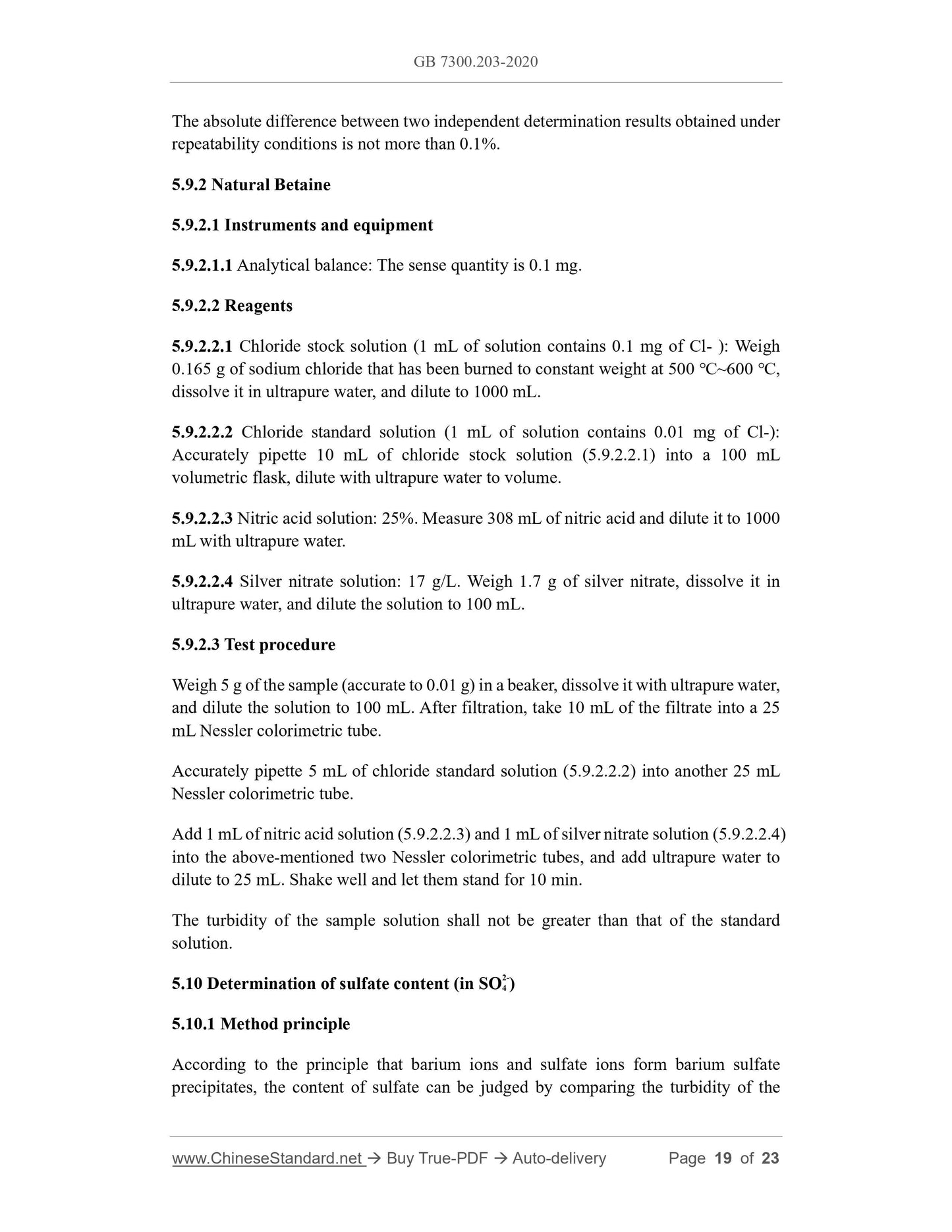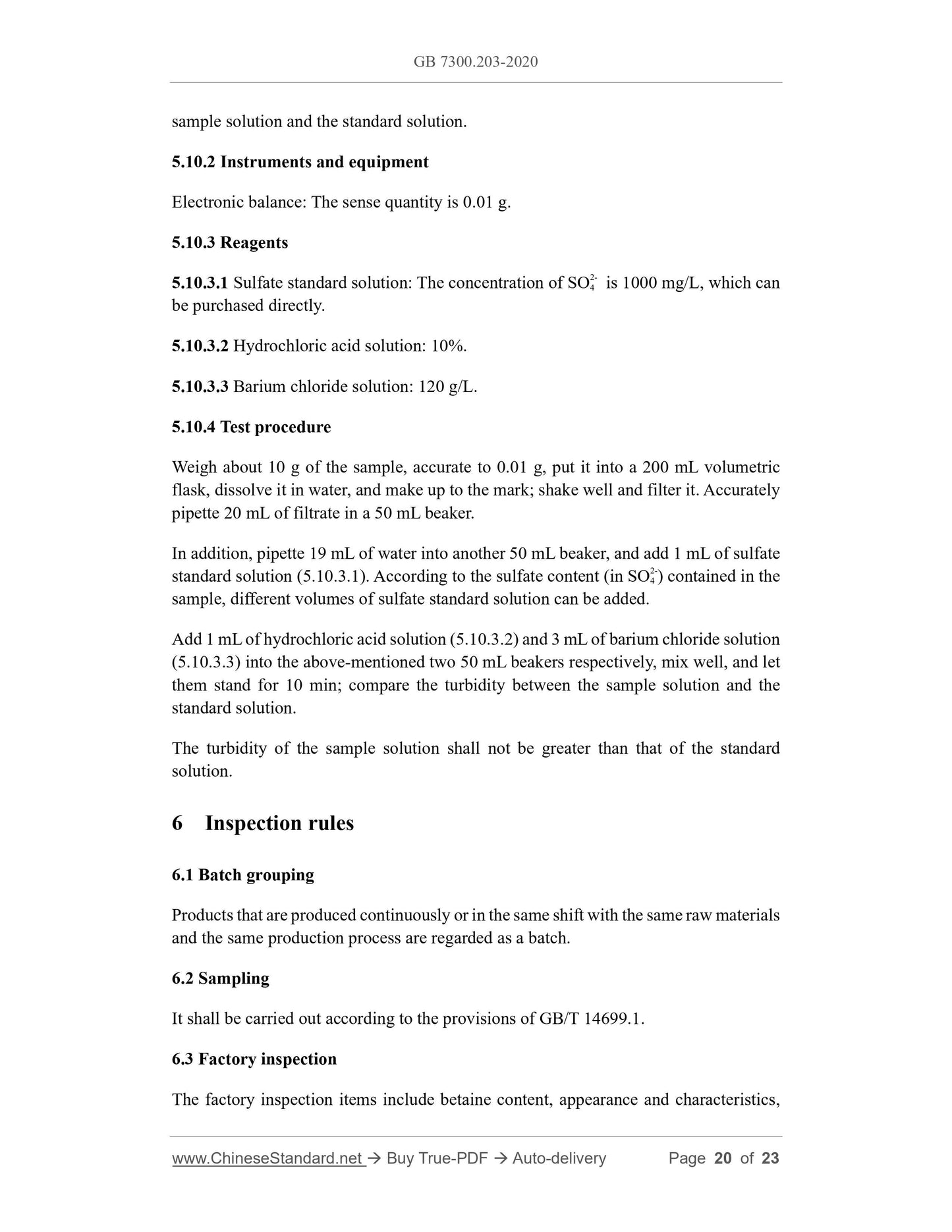1
/
of
12
www.ChineseStandard.us -- Field Test Asia Pte. Ltd.
GB 7300.203-2020 English PDF
GB 7300.203-2020 English PDF
Regular price
$260.00
Regular price
Sale price
$260.00
Unit price
/
per
Shipping calculated at checkout.
Couldn't load pickup availability
GB 7300.203-2020: Feed Additive - Part 2: Vitamins, provitamins and chemically well-defined substances having similar effect - Betaine
Delivery: 9 seconds. Download (and Email) true-PDF + Invoice.Get Quotation: Click GB 7300.203-2020 (Self-service in 1-minute)
Newer / historical versions: GB 7300.203-2020
Preview True-PDF
Scope
This part of GB 7300 specifies the requirements, test methods, inspection rules, labeling,packaging, transportation, storage, and shelf life of the feed additive betaine.
This part applies to natural betaine products that are separated from beet molasses and
processed, and feed additive betaine products that are chemically synthesized from
sodium chloroacetate and trimethylamine.
Basic Data
| Standard ID | GB 7300.203-2020 (GB7300.203-2020) |
| Description (Translated English) | Feed Additive - Part 2: Vitamins, provitamins and chemically well-defined substances having similar effect - Betaine |
| Sector / Industry | National Standard |
| Classification of Chinese Standard | B46 |
| Classification of International Standard | 65.120 |
| Word Count Estimation | 15,138 |
| Date of Issue | 2020-05-29 |
| Date of Implementation | 2020-12-01 |
| Issuing agency(ies) | State Administration for Market Regulation, China National Standardization Administration |
Share

